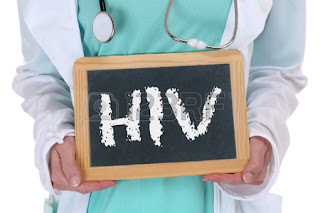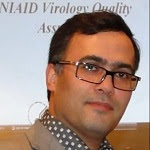Lung-Ji Chang OCM
HIV-Prevention Research
Scientific Federation cordially inviting you to attend the 2nd International Conference & Expo on HIV-AIDS-2018 which will be held in Toronto, Canada during September 17-18,2018. This year we focused on the Theme of ACCELERATING ADVANCEMENTS IN HIV-AIDS TO THE GLOBE.
HIV-AIDS-2018 will provide the excellent opportunities for the researchers, scientists, professors, delegates and students from all over the world exchange information on HIV-AIDS which contains plenary sessions, keynote speeches, poster, and oral presentations on HIV-AIDS On Emerging area on Immunology, Microbiology, Infection&Imunnity, Public Health, Infectious Diseases, Virology, Pathology, Psychology, Biochemistry, Epidemiology, Gynaecology, Global Health, and Population Health.
Major Session on Conference in HIV&AIDS-2018 is Prevention Research and Interventions for Persons Living with HIV/AIDS:
Description: The National Institutes of Health, the Centres for Disease Control and Prevention, and the HIV/AIDS Bureau of the Health Resources and Services Administration support the CDC's Serostatus Approach to Fighting the HIV Epidemic. One aim of the strategy is to help individuals living with HIV adopt and sustain HIV and STD risk reduction, treatment adherence, and effective strategies for coping with HIV/AIDS. Efficacious interventions are needed by community organizations and clinics that provide evidence-based services. To expedite translation from research to practice, we convened scientist-practitioners, HIV treatment and prevention providers, and community/consumer members.
Definition: The World Health Organization guidelines on when to start antiretroviral therapy and on pre-exposure prophylaxis for HIV. Qualitative data was sort of health care providers working at the public family planning clinic and other key informants working with young women. They were identified by the study staff using local networks to document perspectives on factors influencing young women’s decisions to take up and adhere to PrEP as an HIV prevention strategy. Textual data coding as a primary qualitative analytical approach was used to summarize, extract meaning and condense the data using Nvivo.
Research Information: HIV is the leading cause of death among adolescents aged 10–19 in sub-Saharan Africa and the second most common cause of death among adolescents globally, yet this population is not significantly targeted for HIV research. Consequently, there is a dearth of appropriate evidence-based interventions that expressly focus on their HIV needs and the stages of their development. Despite the advances made in HIV prevention, care, and treatment worldwide, adolescents are the only population whose death rates from AIDS are not declining in sub-Saharan Africa. The majority of these deaths occur among adolescents who were infected at birth and infancy. Access to and uptake of HIV testing and counseling among adolescents in sub-Saharan Africa is significantly lower compared to adults, and antiretroviral therapy coverage rates for adolescents living with HIV are also significantly lower compared to other populations living with HIV. This signals the need for deliberate, appropriate, and targeted adolescent HIV programs if the tide of adolescent deaths from AIDS is to be stemmed. Many of the previously implemented HIV prevention interventions for adolescents failed. This is because they did not focus on the factors critical to adolescent development. Integrating developmental factors into the overall context in which HIV transmission occurs is critical to building strong and appropriate HIV prevention interventions that work for adolescents.
Current Research: Current treatment for HIV/AIDS with highly active antiretroviral therapy can be effective but often associated with numerous side effects yet still without a cure. Extensive efforts have been poured into the clearance of the hidden viral reservoir and eliciting immune resistance to HIV. Lent viral anti-HIV hematopoietic stem cell gene therapy offers a potential final solution to this endeavor. We have developed an anti-HIV stem cell gene therapy strategy based on the combination of an advanced lent vector system and multiple anti-HIV genes. A novel lent vector has been established that can simultaneously express microRNA to block endogenous CCR5 expression, a sequence-modified CCR5Δ32 gene to interfere with the function of native CCR5, and multiple selected anti-HIV shRNAs to target viral RNAs. In vitro assays demonstrated that ectopic expression of CCR5Δ32 protected against R5-HIV-1 infection. In addition, the expression of a CCR5 miRNA effectively blocked R5-HIV-1 infection. The further addition of an intronic cassette incorporating miRNAs targeting three viral RNA sites including HIV-1 pol, int, and vpu, had shown marked anti-HIV effects. Evidence supports that transduction of adult CD34+ hematopoietic stem cells with this anti-HIV multi-gene vector does not impair hemopoiesis of the HSCs. Thus, autologous HSC transplantation to ectopically express CCR5Δ32 and multiple miRNAs targeting endogenous CCR5 and three highly conserved HIV-1 genomic sites may provide an ultimate cure to end HIV-1/AIDS.
To Know More about Hiv-Aids-2018: Click Here
.png)















